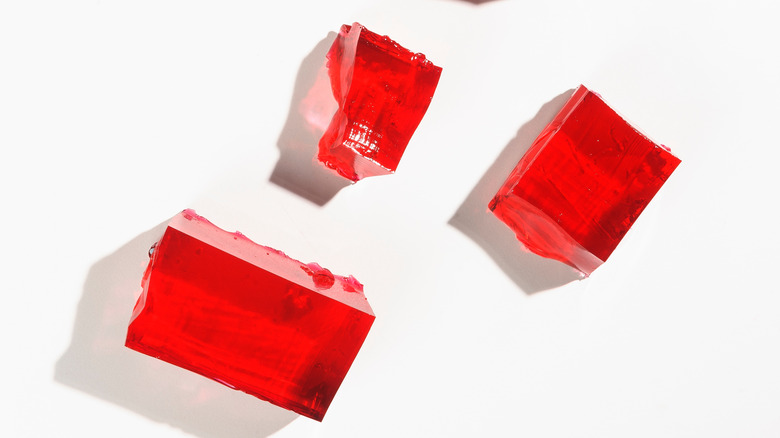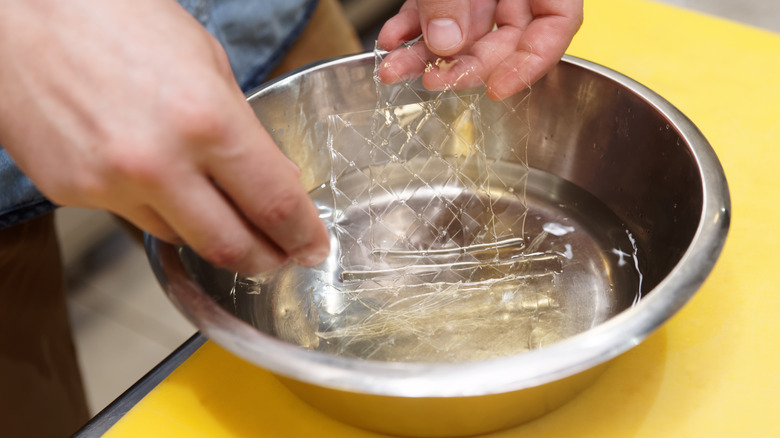How Long Does It Take To Bloom Gelatin?
Gelatin, typically found in both powdered and sheet forms, is a versatile ingredient used in a wide range of culinary creations, and its bloom time is remarkably fast, roughly about 5 to 10 minutes. It's a protein obtained from collagen, usually found in bones (as explained by Science Direct) and flavorless and odorless; for cooking needs, it has to bloom.
Blooming allows the gelatin molecules to absorb water and swell, essential for their dispersion and uniform distribution. Proper blooming ensures that gelatin can dissolve evenly when heated, creating a smooth, consistent texture in the final dish. If gelatin is not adequately bloomed, lumps or inconsistent gelling may occur, affecting the overall quality of the recipe.
The methods for blooming sheet and powdered gelatin are similar. For sheet gelatin, submerge the sheets in a bowl of cold water for about 5 to 10 minutes until they become soft and pliable., then squeeze out excess water. For powdered gelatin, sprinkle it evenly over a small amount of cold water, then let it sit for about 5 to 10 minutes until it swells and becomes jelly-like. Then, it's ready to be melted and added to a recipe. Gelatin is an ideal thickening and gelling agent in a wide range of recipes, from desserts like jellies and mousses to savory dishes like aspic and terrines.
Powdered gelatin versus sheet gelatin
So, which is needed for a given recipe, powdered or sheet? Both have unique advantages, and the better option can depend on a multitude of factors.
Powdered gelatin is perhaps the more commonly used form, and for good reason. It's easy to work with, dissolves readily in warm liquids, and has a grainier shape that makes it easier to disperse. It is also blessed with a longer shelf life, and is less susceptible to moisture than sheet gelatin.
While sheet gelatin is less prevalent, it has its own set of advantages. Many prefer sheet gelatin for its consistency, as it's standardized with a precise gelatin content per sheet, making it easier to control the texture of a dish. It frequently results in a more translucent appearance, a critical factor for dishes like molded or layered desserts. Furthermore, there's no need for precise measurement; one sheet typically sets the same amount of liquid every time. Just remember, neither form is superior. Any choice between the two should align with the desired recipe (and perhaps the chef's confidence in making it).
There's also the matter of gelatin substitutes, particularly when it comes to those with allergy concerns. Some ingredient swaps are straightforward, others, if done incorrectly, could spell a gelatin disaster. So mind the recipes, grab some Jell-O, and get blooming.

